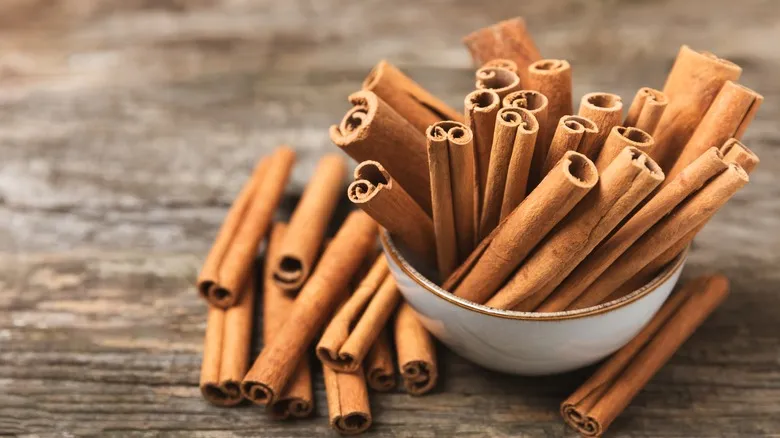What is cinnamon?

Cinnamon is derived from the bark of the cinnamon tree, which comprises several species within the Cinnamomum genus, a member of the Laurel family. These trees are indigenous to South and Southeast Asia, thriving in warm, humid environments. Although there are over 250 species in the Cinnamomum genus found worldwide, only a select few are cultivated for contemporary use.
The delightful aroma and taste of cinnamon primarily stem from the compounds cinnamaldehyde and trans-cinnamaldehyde, which are found in the oils of the bark. Beyond enhancing the flavor of foods, cinnamon's fragrant properties make it ideal for use in perfumes, household products, and medicinal applications.
While the leaves, flowers, and roots of cinnamon trees have been utilized by humans throughout history, the term "cinnamon" specifically refers to the bark. This term can denote the bark itself, the ground powder, or the essential oil. It is important to note that pure cinnamon extract consists solely of cinnamon oil, along with some water, alcohol, and glycerin (similar to vanilla extract), whereas imitation cinnamon products often contain artificial coloring and "natural flavors," with a significant lack of actual cinnamon.
Myth and mystery: A history of cinnamon

Cinnamon is among the oldest spices that have been commercially cultivated and traded. In fact, it might be the earliest spice documented in Chinese history. Surprisingly, cinnamon was once considered more precious than gold. The Ancient Egyptians utilized it in the embalming process, while it was regarded as a common and sacred funerary spice in Ancient Rome. The term "cinnamon" originates from the Arabic word "amomon," which translates to fragrant spice plant.
By the Middle Ages, cinnamon had become a popular culinary ingredient. Europeans also employed it to enhance appetite, assist with digestion, and even for romantic purposes (the latter claim seems to hold some truth, at least in elderly male rats). Some attribute cinnamon as a key factor that spurred European exploration of the Americas, as Spain and other nations sought a route to the East Indies.
Throughout history, spice traders spun elaborate stories to obscure the true origins of cinnamon and inflate its worth. For example, Herodotus recounts tales of enormous birds that transport cinnamon sticks to their nests, making them unreachable for humans. To counter this, traders would leave large pieces of oxen and donkeys (as one does) to entice the birds to descend. When the birds carried the meat back to their nests, the weight would cause the nests to collapse, resulting in a cascade of precious cinnamon.
Varieties of cinnamon
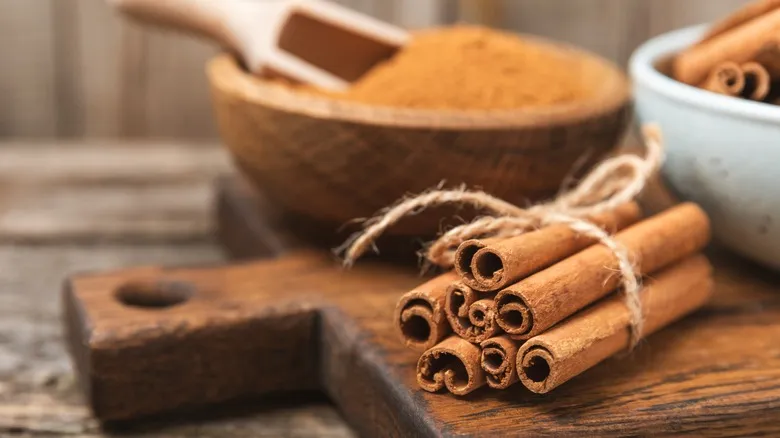
There are various types of cinnamon available today, with only one recognized as the "true" cinnamon: Cinnamomum verum, previously known as Cinnamomum zeylanicum, and often referred to as Ceylon cinnamon. Its close relative, Cassia cinnamon (Cinnamomum aromaticum), is cultivated in the same general region but actually makes up the majority of the cinnamon market in North America.
In total, there are four main varieties of culinary cinnamon: true cinnamon, Cassia, Vietnamese (Cinnamomum loureiroi), and Indonesian (Cinnamomum burmannii). True cinnamon is primarily sourced from its native regions of Sri Lanka, Myanmar, and India, although it can also be cultivated in parts of South America and the Caribbean that share similar climates. Cassia cinnamon is predominantly grown in Indonesia, as it is native to China and Southeast Asia. Vietnamese and Indonesian cinnamon are produced in their respective countries.
It's important to note that Cassia cinnamon, which is more commonly found than true cinnamon, is not considered the authentic variety by experts. As a result, it is sometimes labeled as "fake cinnamon." However, this does not mean it is an imitation; it is derived from the bark of a tree within the cinnamon genus and possesses a strong cinnamon aroma due to its oil containing 95% cinnamaldehyde, compared to only 50% to 63% in true cinnamon. While Cassia cinnamon is flavorful, it lacks the complexity and sweetness of true cinnamon, making the latter more suitable for desserts.
Modern cinnamon cultivation and production
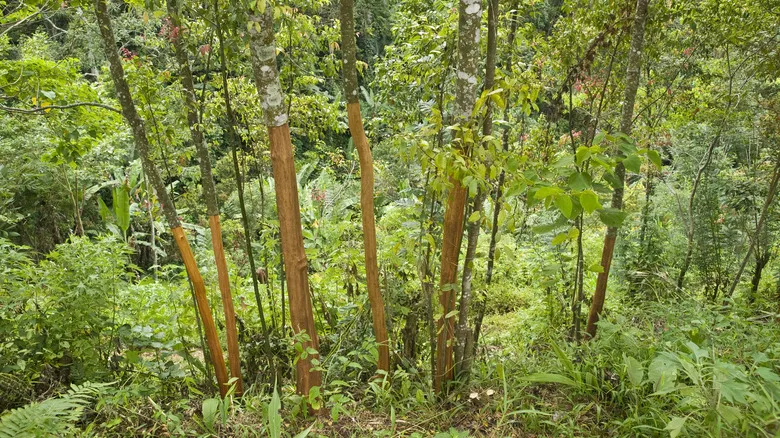
Cinnamon trees are cultivated on farms that essentially transform into cinnamon forests. There are various methods for growing and harvesting these trees. One approach involves cutting them back to stumps every two to five years, prompting a surge of shoots that grow in a bushy manner. After several years, these shoots become ready for harvest again, a common practice on authentic cinnamon plantations.
In contrast, many commercial growers allow the cinnamon trees to develop into full-sized trees, a process that can take between 15 and 20 years. When the trees reach maturity, farmers strip bark from the lower part of the trunk to signal that they are next in line for harvesting. During the harvest season, which occurs twice a year, the trees are felled, the outer bark is removed, and the inner bark—what we recognize as cinnamon—is collected. Each tree can yield nearly 80 pounds of bark, resulting in an impressive 24,000 to 32,000 pounds per acre, thanks to the trees' dense growth.
The final product is created by allowing the bark to cure. As it dries, it curls into the familiar shape of cinnamon sticks. This process is labor-intensive and requires skilled artisans, as smaller sticks can command higher prices in the market.
The flavor of cinnamon
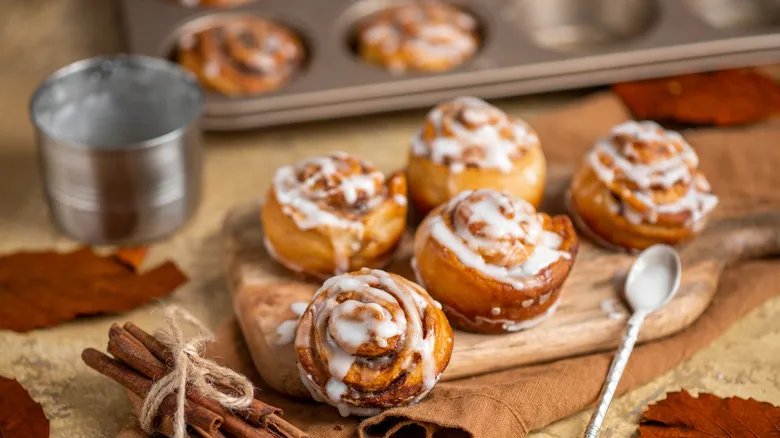
Cinnamon exudes a warm, earthy, and comforting essence, with a hint of spice that isn’t overwhelming. In North American and European cultures, it is especially associated with autumn and festive occasions, while in other regions, it finds its place in savory dishes. It’s likely that you connect cinnamon with cherished recipes, beverages, or celebrations, along with the family customs that come with them.
Cassia cinnamon is known for its bolder, spicier flavor compared to the milder true cinnamon. Most likely, you’ll encounter Cassia unless you’re specifically seeking out the other variety. Eating it raw can be quite intense, and it’s not something anyone would genuinely want to do. Additionally, a word of caution: the so-called cinnamon challenge, which involves attempting to swallow a spoonful of cinnamon in under a minute, is extremely hazardous and should be steered clear of.
Available forms of cinnamon
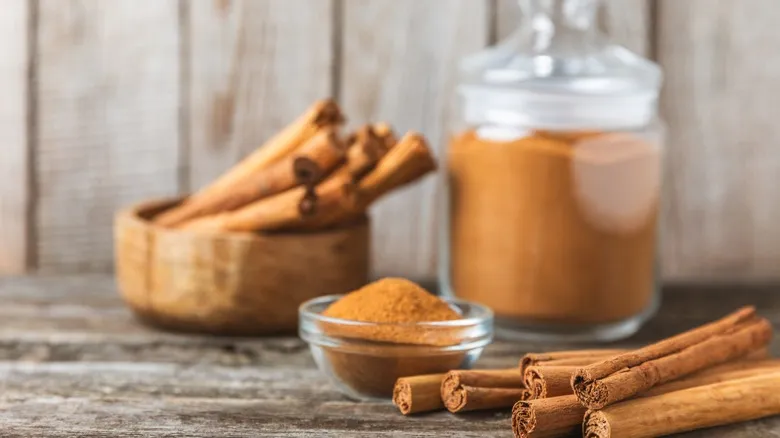
Cinnamon can be utilized in various ways in your culinary endeavors and comes in multiple forms. The most common varieties are sticks, often referred to as quills, and ground powder. These forms are typically packaged in bags, jars, or plastic containers and can be easily found in most grocery stores. Occasionally, grocery stores, and more frequently specialty shops, offer smaller pieces known charmingly as quillings, featherings, and chips, depending on their size, which may be more affordable than whole sticks.
Cinnamon is also available as an essential oil, but caution is advised in its use. Essential oils are significantly more potent than regular cooking oils, so it's important to use them correctly—either by adding small drops to dishes or mixing them with a carrier oil for homemade products like skincare items.
Additionally, cinnamon-flavored ingredients, such as cinnamon syrup, can enhance your sweet creations, but they are not pure cinnamon. Always review the ingredient list before use; for instance, syrup will typically contain sugar and may include other additives. Many popular spice blends, like those for apple pie or pumpkin pie, also incorporate cinnamon.
How to choose the best spices
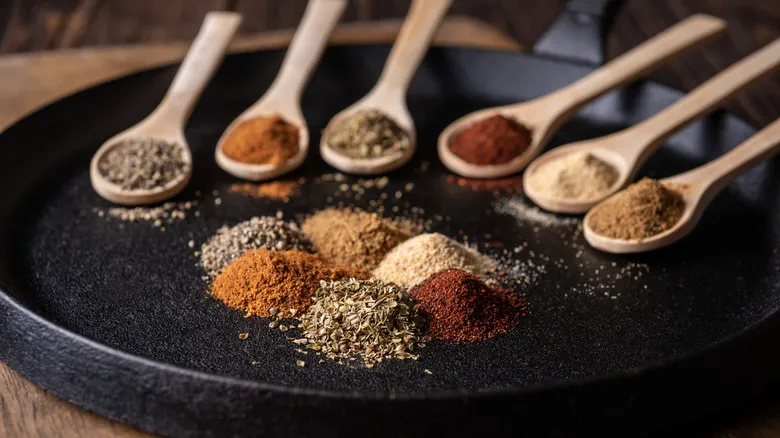
To select the finest spices, opt for well-known brands that offer a variety of spice types and can provide information about their sourcing. In stores, look for vibrant spices that are rich in color and, if available in bulk, have a strong aroma. Steer clear of any products that are past their expiration date; while they may not be harmful, they will have significantly lost their fragrance. Ethnic grocery stores are often excellent places to find fresh spices at affordable prices.
If you're purchasing ground spices, ensure there are no clumps and review the ingredient label to confirm that you're getting pure cinnamon without any fillers or additives. While anti-caking agents can prevent clumping, they can also weaken the spice's potency. It's advisable to replace your cinnamon frequently instead of opting for products with additives. Additionally, if it’s important for your recipe, check whether you are buying Cassia or true cinnamon.
Common uses for cinnamon in the kitchen
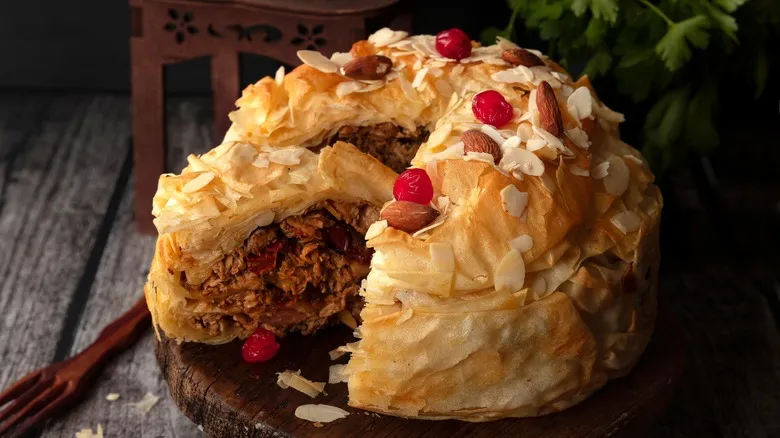
Cinnamon enjoys widespread popularity across various dishes and cuisines. It's a key ingredient in sweet delights like cinnamon rolls and gingerbread, as well as in savory meals such as Moroccan chicken pie, Indian butter chicken, and beef chili. Additionally, it's featured in beverages ranging from Mexico's beloved horchata to mulled wine. There are countless inventive ways to incorporate cinnamon sticks into your cooking as well.
Speaking of a beloved Sunday indulgence, did you know you can achieve that homemade taste with canned cinnamon rolls without starting from scratch? There are several tricks to enhance their flavor (and if you want to impress your guests, we won’t spill the secret). For example, adding heavy cream before baking, brushing them with melted butter, or creating a cinnamon crumble topping with common pantry items can elevate your brunch from mundane to magnificent.
Curious about whether grinding your own cinnamon is worthwhile? Absolutely! There are numerous methods to do so. You can turn sticks into powder using a microplane zester, a mortar and pestle, or even a Ziplock bag with a meat tenderizer. If you prefer a more automated approach, a blender, spice grinder, coffee grinder, or food processor can do the job, although food processors can be a bit finicky. Personally, I haven't had much luck with high-speed blenders either.
Substitutes for cinnamon
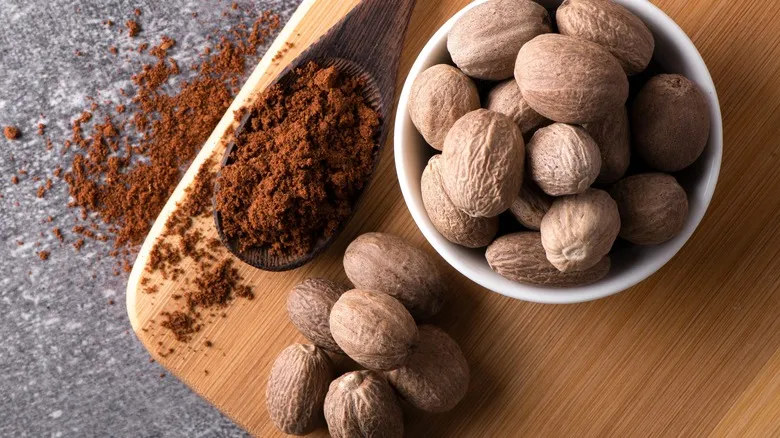
There are numerous alternatives to cinnamon, most of which originate from similar climates. Consider using nutmeg, allspice, ginger, cardamom, cloves, or mace, all of which can provide an earthy warmth akin to that of cinnamon. A cinnamon stick can also be effective when freshly grated with a microplane or zester. However, since its flavor is significantly stronger, be sure to use only ¼ of the amount of ground cinnamon specified in the recipe. The same principle applies when substituting other spices; always check the appropriate substitution ratio, as it often isn't a straightforward 1-to-1 exchange.
You might also opt for a spice blend that includes cinnamon, such as pumpkin or apple pie seasoning. Again, it's important to research the correct quantity to use, as this will vary based on the type of substitute and its form (ground, whole, or oil). If needed, you can omit cinnamon from the recipe entirely, although this may result in a loss of flavor. This approach is more advisable when other spices are present, as it can help prevent a bland outcome.
Other uses for cinnamon at home

Thanks to its antimicrobial properties, cinnamon is a valuable component in home remedies. You can use it on a toothbrush to help heal mouth sores, soak your feet to combat fungal infections, or alleviate bloating.
Cinnamon also acts as an antifungal agent, effectively eliminating household mold. If you notice white fuzz or yellow caps appearing in the soil of your houseplants, simply sprinkle cinnamon over the affected areas and wait a day or two for results. The issue will be resolved quickly. Focus on ensuring the fungus is completely covered rather than worrying about the quantity used. This method is also effective against mold, ants, and other pests in your home or greenhouse. Alternatively, you can mix cinnamon with water to create a spray.
Moreover, cinnamon can be incorporated into a natural household cleaner. To prepare it, place orange peels in a Mason jar along with a few cinnamon sticks, then cover everything with vinegar. Let the mixture sit in a dark area for about two weeks before straining it into a spray bottle for cleaning surfaces. Just be sure to verify which surfaces are safe for vinegar before applying.
Growing your own cinnamon
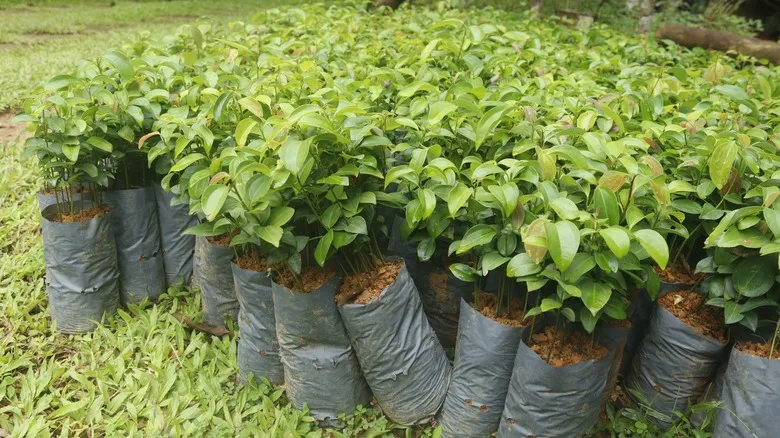
Cinnamon trees, originally from Asia, thrive in warm climates. Luckily, certain regions in the United States experience sufficiently warm weather. Some experts suggest that if you reside in USDA zones 9 to 11 and have a sunny, warm location, you can cultivate your own cinnamon tree. However, others advise that warmer regions, specifically USDA zones 10 to 12, are preferable. If you are in zone 9 or higher, it’s definitely worth a try.
Ensure that the tree has good drainage and maintain consistent moisture levels. Cinnamon trees prefer loamy soil rather than heavy clay or sandy soils, and they thrive in an acidic to neutral pH range. They produce attractive, waxy yellow or white flowers in the summer. When it’s time to harvest your cinnamon, you can either trim branches for use or cut down the entire tree. If you choose the latter, wait to see if new shoots emerge from the stump, allowing for potential future harvests. Typically, harvesting occurs every two years, following the initial two to three years needed for the tree to establish itself.
Health benefits of cinnamon
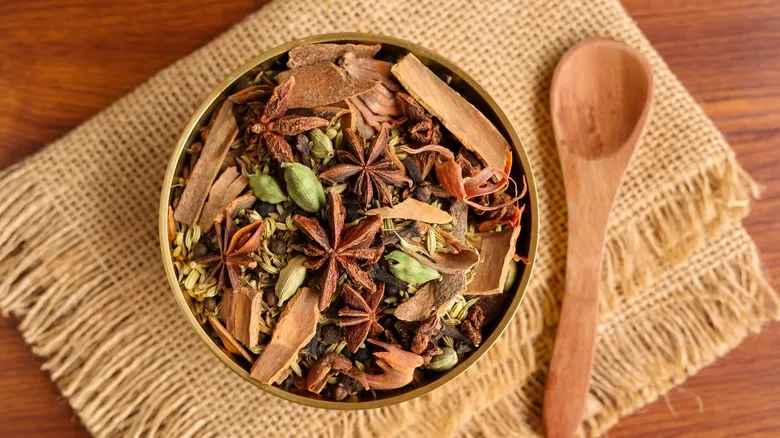
Cinnamon has been utilized in traditional medicine for centuries, if not longer, and is rich in various beneficial compounds that can be accessed through both food and supplements. It may enhance antioxidant levels, offer anti-inflammatory effects, help in cancer prevention, reduce cholesterol, and combat heart disease, among other advantages.
Moreover, reaping these benefits is quite simple. The U.S. Department of Agriculture (USDA) suggests that consuming up to ½ teaspoon of cinnamon daily is healthy. Following this guideline may lead to improvements in blood sugar and cholesterol levels, as indicated by recent human studies.
It's important to remember that to obtain these beneficial compounds, you should consume cinnamon in its solid form rather than as cinnamon oil, which lacks the same active ingredients responsible for health benefits. Therefore, you can incorporate ground cinnamon into your meals or use cinnamon sticks to brew tea.
Storing cinnamon to last
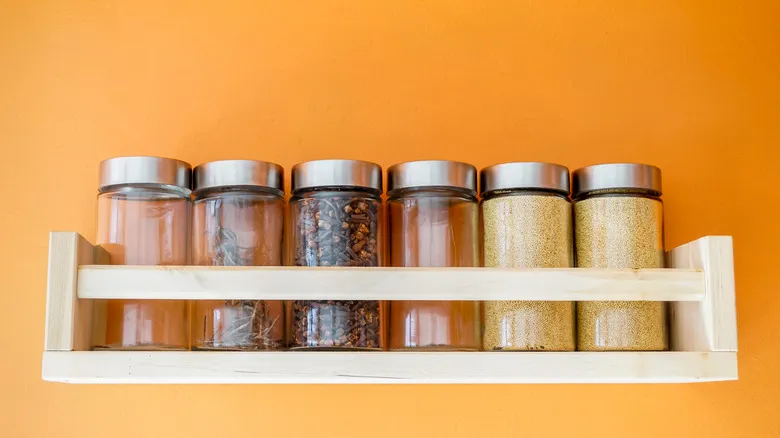
Cinnamon can have a long shelf life if stored correctly. Always place it in an airtight container in a cool, dry location, away from direct sunlight. The interiors of cupboards, pantries, and drawers are excellent options. If you choose to store your spices on a kitchen rack, ensure it is not exposed to direct sunlight. Spices are sensitive to light, which can degrade them and diminish their flavor.
Fortunately, spices do not spoil in the conventional sense, meaning they do not harbor harmful pathogens. They remain safe to consume indefinitely, but their flavor will gradually diminish over time. Ground spices tend to lose their flavor more rapidly than whole spices because they have a larger surface area that allows flavor compounds to evaporate. For optimal flavor, it’s best to use ground spices within three years and whole spices within four years. Given that ground spices lose their potency faster, it might be worthwhile to learn how to grind your own.
Nutritional information

Cinnamon is a low-calorie spice, with less than 7 calories per teaspoon. In terms of health benefits, it’s a great option, although it offers minimal protein, fat, or carbohydrates. However, that same teaspoon does provide about 5% of your daily fiber requirement, which is a plus.
One of the significant advantages of cinnamon is its rich array of vitamins and minerals. It includes iron, magnesium, calcium, phosphorus, potassium, and vitamin A, along with various trace nutrients that can accumulate over time.
That said, there are some potential risks associated with excessive cinnamon consumption. These can include liver damage, mouth sores, low blood sugar, and respiratory issues. Additionally, high doses may negatively interact with certain medications. It’s always wise to consult your doctor before using cinnamon as a supplement to ensure it’s safe for you, although typical amounts used in cooking are generally not a concern. If you're unsure, it's best to limit your intake to ½ teaspoon per day or less, according to the USDA.
Recommended

The History Of Taco Bell Starts With An Entirely Different Type Of Fast Food

How Popcorn Became The Definitive Movie Theater Snack

False Facts People Believed About Food 50 Years Ago
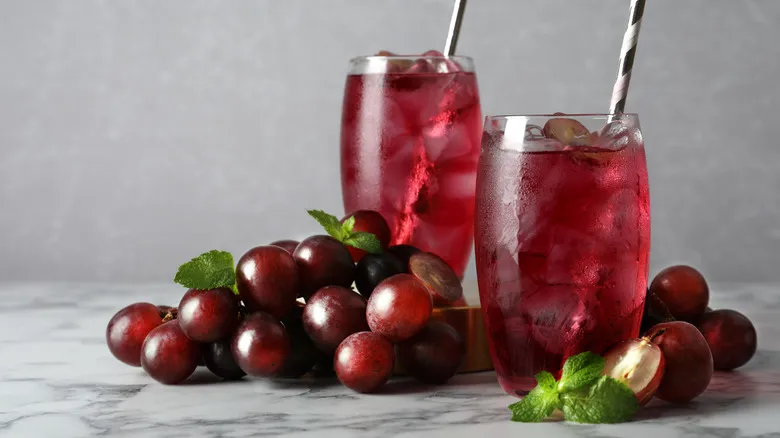
How Grape Soda Became An Iconic Southern Drink
Next up

